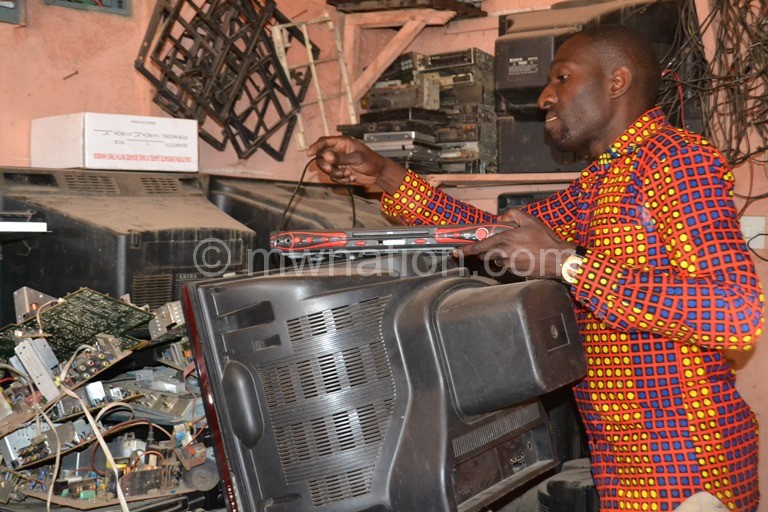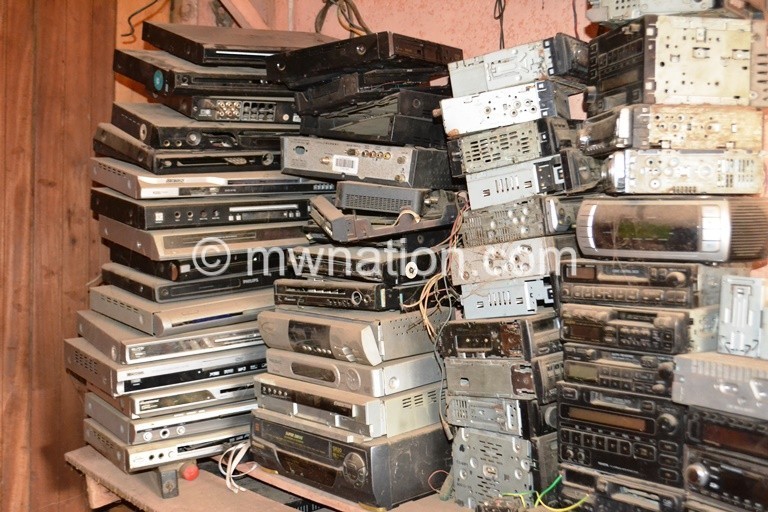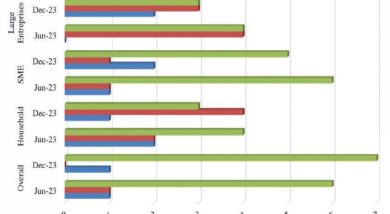Buried in e-waste, Malawi gasps for way out
In most trading centres across Malawi, heaps of unusable electronic devices noiselessly signpost passers-by to the repairers.
The stockpiles also mirror the country’s struggle to sustainably shed and shred the electronic gadgets that cannot be used any longer.

As the country grapples to manage waste its rapidly growing population churns out, electronics repairers’ shops have become dumpsites of discarded television sets, computers, calculators, mobile phones and other electric appliances.
Reagan Mandula, who repairs electronic devices in Machinjiri Township on the eastern side of Blantyre city, is haunted by e-waste quickly turning his workplace into a scrap yard.
He laments: “I’m here to fix faulty devices, but some people think I run a landfill site or a graveyard of electronic equipment they cannot use any more.”
Mandula’s shop, Scrabby Electronics, is inundated with televisions, radio sets and mobile phones that have stopped working. Inside, every space is taken and the shelves are sagging under the weight of dismantled TVs that are either outdated or no longer wanted. Some of them are heaped outside.

“Had we an e-waste recycling site, my shop would not have been littered with things that are supposed to be at some place where they can be managed responsibly,” he says.
‘How time flies!’
His lamentation mirrors the agony of many electronics repairers. They wish the country had e-waste yards for sorting, recycling and crashing them responsibly.
But crabby Electronics plays home to some television sets, radio receivers and mobile phones dumped five years ago.
“Some are reparable, but the owners are not interested to take them back. They may have already moved on to newer technology, so they do not want something they cannot handle,” he says.
Mandula has been “a doctor of ailing electronics” since 1998. From the shop, he has seen bulky heavyweight television sets give way to lightweight flat screens that occupy less space, offer a sharper picture and do what decoders, DVD players and other gadgets used to do.
He waxed lyrical of the swift switch to all-in-one smart screens for reducing the number and weight of electronics one keeps.
However, the shift symbolises how fast today’s trendy electronics are reduced to unmanageable waste.
“How time flies!” he sighs. “Not long ago, we had this bulky TV and the bigger, the better it was. Now we have slim screens that offer so much more. In the absence of e-waste management plants, where are the good ole big TVs going when they stop working?”
To ensure his business does not turn into a waste yard, Mandula sometimes dismantles the TVs and phones—separating metals from plastics and glasses.
He explains: “If not managed properly, the gadgets and their bits and pieces can be hazardous to health and the environment. There have been cases of children being hurt by glass splinters from electronic devices.
“From time to time, some vendors come to buy copper wires for re-use and plastic casings for recycling. This is the way to go. We need to keep the country clean and conserve the environment. Presently, there is a lot of talk about reducing plastic pollution because it harms the environment.”
Mandula wishes there were special waste management centres to recall all electronic throwaways for sorting, recycling, re-use and sustainable disposal.
Currently, unwanted electronics and their parts are not only piling in shops and offices, but also crop fields, water sources and pasture.
Unfortunately, some of them emit toxic substances that harm human health and the environment.
This represents one of the major public health and environmental threats posed by e-waste exposes in the global push for sustainable waste management.
Sustainable development in a more populated planet requires the fast-rising population to manage waste in a way that meets the present needs without compromising future generations’ ability to meet their own.
A growing problem
To close the gap, government engaged the Environmental Affairs Department (EAD) and Malawi Communications Regulatory Authority (Macra) to produce national guidelines for e-waste management.
A study assessing the volumes of e-waste in the ongoing policymaking reveals that the country generates between 1 210 and 1640 tonnes of e-waste every year.
The assessment by Luxon Consulting Group in the US, the stockpile worth $5.76 million in 2017 largely comprises mobile phones, computers and TV sets.
However, the new evidence points to a bleak future unless the country finds sustainable ways of managing the widespread e-waste by 2022.
It reads in part: “It is estimated that in the upcoming five years, between 8.69 million and 11.6 million devices—mobile phones, computers and TV sets— will become e-waste in Malawi.
“Most devices will be mobile phones due to high mobile penetration and the exponential growth it has had in the past decade. Compared to computers and TV sets, mobile phones will represent above 95 percent of total e-waste devices during the period, accounting for 8.41 and 11.24 million devices.”
However, the forecast shows that TV sets will represent the largest e-waste in terms of weight by 2022, representing up to 76 percent or 6.20 kilo-tonnes of all electronics discarded.
The country does not have a plant for proper disposal of any electrical and electronic equipment the holder discards or intends to eliminate from the environment.
At Mzedi Dumpsite on the margins of Kachere in Blantyre, we saw chips of the top three e-waste scattered across greasy heaps of waste arriving from various markets and settlements in the commercial city.
However, the scavengers said they usually pick the bits and pieces for sale back in the community where the repairers and recyclers of plastics and metals constitute their main market.
“We don’t know what becomes of the TVs and radio receivers when we get our money. All we want is money,” said a boy calling himself Douglas, who has been picking waste material at the smelly landfill since 2009.
Closing the gaps
This shines a light on blurry pathways of unwanted electronic items beyond the shops, homes, offices and dumpsites where they keep piling with no sustainable solution in sight.
The National Waste Management Strategy, completed last year, calls for stringent measures to tackle hazardous waste. However, the country lacks both policies and waste management plants for the desired shift.
According to EAD director Tawonga Mbale-Luka. her department and Macra are “in the process of developing a policy on e-waste”.
“So far, the consultant contracted to assess the status of e-waste in the country successfully completed the task and a report with concrete actions was produced. One of the key actions that await implementation is the development of the policy. Discussions are underway to start the process,” she says.
According to the report, the volumes of e-waste will not be sufficient to cover the costs of “an expensive e-waste treatment facility”—including a metal or plastic refinery.
The consultants recommended a phased public-private partnership in which discarded electronic material should be collected and transported to specific storage sites for future export to locations with adequate facilities to treat the e-waste.
“While it is not financially viable to establish an e-waste treatment facility, it is essential that Malawi implements a take-back system for e-waste,” reads the report.
Luka calls for reductions in waste resulting from electronic accessories the country imports.
“Malawi does not have an e-waste management plant. The study on the status of e-waste established the availability of e-waste recycling activities and the main findings were that most of the e-waste is either stockpiled in offices and electronics repairers’ shops or people salvage some useful items and dump the casing,” she explains.
Every day, truckloads of electronic devices cross into the country, including secondhand and fake accessories that quickly crumble into disuse.
Reducing e-waste
According to Mbale, cutbacks are pivotal to the e-waste policy in the making.
“You may wish to know that waste management hierarchy priotises waste reduction. This is why a separate policy on e-waste will be of great help as incoming products are supposed to comply with requirements to avoid importation of waste, fake or near-end products which take little time to expire,” she explains.
Presently, Macra is drafting bans on importation of low-grade ICT materials that ramp up the accumulation of e-waste from information and communication technologies that peter out in no time.
According to Macra lawyer Dan Chiwoni, the standards will protect ICT consumers from substandard mobile phones, computers, data storage devices and other imported gadgets that pose threat to their health and the environment.





